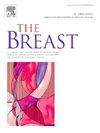An international Phase IV field study - psychometric properties of the updated module on assessing quality of life of patients with breast cancer EORTC QLQ-BR42
IF 5.7
2区 医学
Q1 OBSTETRICS & GYNECOLOGY
引用次数: 0
Abstract
Background
The EORTC QLQ-BR23, published in 1996, was one of the first disease-specific questionnaires to assess health-related quality of life (HRQoL) in patients with breast cancer (BC). In the last decades, major changes in BC treatment have occurred, requiring an update of this module. The results of the Phase 1–3 of the study were published in 2019. The aim of study was to examine the psychometric properties of the provisional EORTC-QLQ-BR45.questionnaire.
Methods
Patients with a diagnosis of BC, age ≥18 years, and cognitive able to fill the questionnaire were included in the study and completed the provisional questionnaire during a visit at each participating centre. Psychometric analyses included the evaluation of the scale structure, internal consistency, test-retest reliability, convergent, discriminant, and clinical validity, and responsiveness to change.
Results
Between May 2019 and September 2021, 576 patients from 22 centers (17 countries, 16 languages) were enrolled in the study. The psychometric analyses resulted in a final questionnaire containing 42 items divided into 10 scales: Breast Symptoms, Body Image, Sexual Functioning, Arm Symptoms, Systemic Chemotherapy Side Effects, Hand/Feet Symptoms/Neuropathy, Skeletal Symptoms, Endocrine Symptoms, Breast Satisfaction, Vaginal Symptoms, and 3 single items: Weight Gain, Sexual Enjoyment and Future Perspective.
Conclusion
The revised EORTC QLQ-BR42 questionnaire incorporates the EORTC-QLQ-BR23 original items, combined with 19 new items that address the new therapies developed over the past 20 years. This comprehensive module is a valid instrument to assess the HRQoL of BC patients and can be used in place of the BR23 in future trials.
求助全文
约1分钟内获得全文
求助全文
来源期刊

Breast
医学-妇产科学
CiteScore
8.70
自引率
2.60%
发文量
165
审稿时长
59 days
期刊介绍:
The Breast is an international, multidisciplinary journal for researchers and clinicians, which focuses on translational and clinical research for the advancement of breast cancer prevention, diagnosis and treatment of all stages.
 求助内容:
求助内容: 应助结果提醒方式:
应助结果提醒方式:


